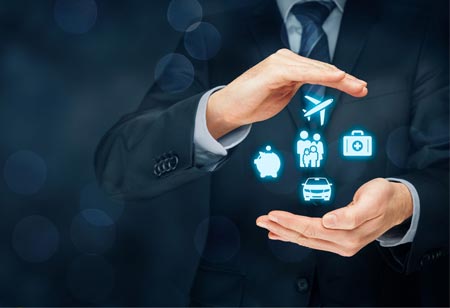Thank you for Subscribing to Insurance Business Review Weekly Brief
- Home
- Sections
- Claim Adjusting
- Credit Insurance
- Cyber Insurance
- Expat Insurance Agency
- Health Insurance
- Insurance Agency Management
- Insurance Broker
- Insurance Consulting
- Insurance Risk Management
- Liability Insurance
- MGA
- Reinsurance
- Specialty Insurance
- Third Party Administartor
- Travel Insurance
- Underwriting
- Worker Compensation
- News
- CXO Insights
- Vendor Viewpoint
- Magazine
- Conferences
- Subscribe
- About Us
- CXO Awards
-
Different Use Cases of IoT in the Insurance Industry

By
Insurance Business Review | Wednesday, November 16, 2022
Stay ahead of the industry with exclusive feature stories on the top companies, expert insights and the latest news delivered straight to your inbox. Subscribe today.
IoT is the "Things" with sensors, software, applications, servers, and other devices.
Fremont, CA: The appearance of the Internet of Things (IoT) is anticipated to induce unusual interruption and change in conventional enterprises. The insurance industry, which has historically been lagging in change, may achieve from these new technologies.
Let's define "IoT" in this context before consulting how the Internet of Things will influence insurance. IoT is the term utilized to explain the internet-connected interconnection of physical objects or devices, also noted as "Things," with sensors, software, applications, servers, and other devices. Similarly, individuals communicate, cooperate, and understand one another's experiences, which allows data to flow between devices and sensors. By 2025, 75 billion networked devices will be in application, up from over 26 billion. Because of the broad accessibility of devices with conjunctive capabilities and the prospect of real-time communication between them, the IoT has the prospect of greatly increasing efficiency and extending capabilities over a wide range of enterprises.
Some Major Application areas of IoT in Insurance:
Smart Homes
One of the most favorable areas is smart homes. Smart security systems, smoke alarms, and doorbells are evolving more dominant in numerous houses. If insurance companies access this device's data, they may present services to preclude accidents and offer clients better service.
Connected Cars
Cars get now tied to IoT applications through telematics. For illustration, insurance companies can observe driving behavior with telematics, which allows them to use an easy mobile device to monitor the driver's whereabouts, speed, acceleration, and heading wheel movement in real time. Real-time access to these variables permits us to observe different parameters, comprising engine temperature and pressure, oil level, brakes, seat belt detection, human existence detection, interior temperature and humidity, and dozens more.
Commercial Insurers
Commercial insurers form a dynamic rating methodology that allows them to deliver risk-based pricing to their clients by employing IoT devices, applications, and sensors implanted in industrial units. IoT applications that provide real-time data guide insurers in addressing risk and greatly lowering losses.
Smart underwriting
Insurance brokers earlier had to collect and count on applicant-provided data. As employing IoT apps in the insurance sector, the underwriting procedure has become more effective and fast. Insurance companies may design a more precise client portfolio, assess risks beforehand, cut losses, and improve relationships with policyholders.
More in News






